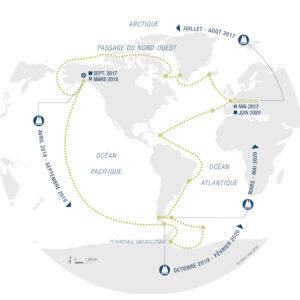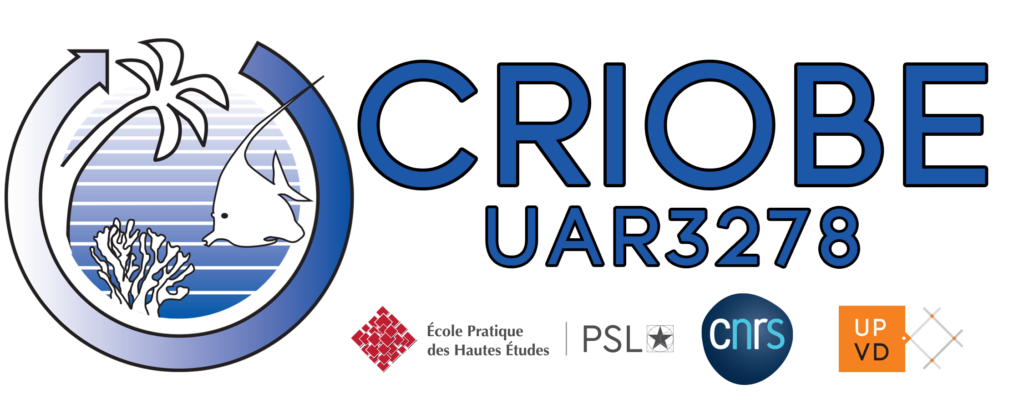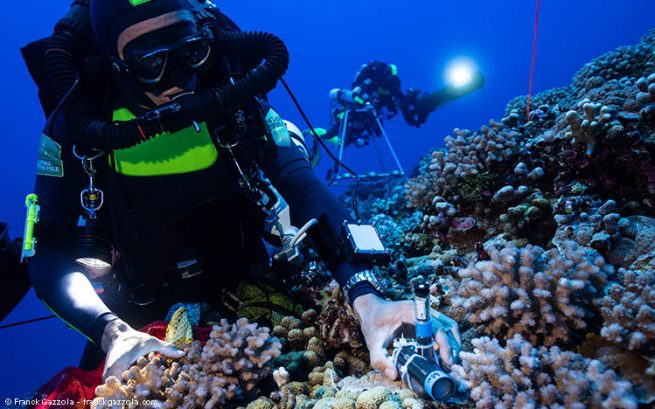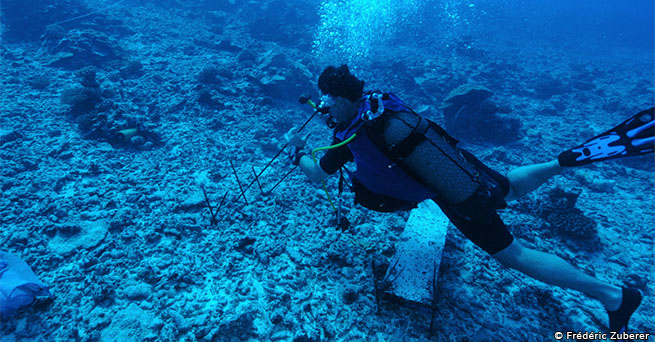- Titre du Projet : DEEPHOPE
- Coordination : Laetitia Hédouin
- Période : 2018-2020
- Zone d’étude : Polynésie française
- Collaborateurs : – National: L’Expédition UTP , Dr P Galand (French, DR CNRS, LECOB, Banyuls Observatory) for microbiomes; Dr E Martinez (French, CR IRD EIO) for oceanography data; Dr D Lecchini (French, CRIOBE) for marine acoustic measurements. – International: Prof. Medina (American, Pennsylvania State University) for microbiomes and symbiosis; Prof. Pichon for coral taxonomy (French, Museum of Tropical Queensland); Dr. Torda (Hungarian, ARC Centre of Excellence for Coral Reefs Studies, James Cook University) for connectivity and coral adaptation/acclimatization; Dr P Bongaerts (Dutch, Global Change Institute, Queensland University) for connectivity; Dr. Moya (French, ARC Centre of Excellence for Coral Reefs Studies, James Cook University) for transcriptomics and Fluorescent Proteins; Dr M Metian (Belgian, International Agency of Atomic Energy) and Dr P Swarsenski (American,Belgian, International Agency of Atomic Energy) for ocean acidification measurements.
Résumé :
Début février (2017), le Dr Laetitia Hédouin (CRIOBE) a visité le bateau WHY à Concarneau, en France, pour lancer un nouveau partenariat entre CRIOBE et Under the Pole (UTP) Expeditions.
À partir de mi-juillet 2018, le voilier WHY de l’expédition UTP, arrivera en Polynésie française pour explorer les écosystèmes mésophotiques. Cette mission permettra de découvrir et d’étudier les récifs coralliens profonds de 30-150 m – un sujet encore relativement inconnu. Deux questions scientifiques majeures :
- Les écosystèmes mésophotiques sont-ils un refuge pour les récifs peu profonds? ;
- Par quels mécanismes certains coraux peuvent vivre dans ces zones profondes.
Pour plus d’informations sur l’expédition, veuillez visiter: http://utpexpeditions.com

Actualité
- 21 Mai 2019 | Exposition : La France et Le Pacifique | du 21 mai au 30 juin |a l’aquarium Paris
- 4 Avril 2019 | Under the Pole et les scientifiques du CRIOBE ont récolté le corail mesophotique le plus profond au monde à 172 mètres de profondeur | UTP
- 20 Fevrier 2019 | Sciences. Under The Pole III et l’étude des coraux | Le Télégramme
- 9 Septembre 2018 | En Polynésie, l’expédition Under the Pole étudie les coraux d’eau profonde pour sauver les massifs coralliens | RTS INFO/Video
- 22 Août 2018 | Gros plan sur les coraux profonds avec Under The Pole | Radio RTS
- 11 Août 2018 | L’expédition Under The Pole III lancée en Polynésie Française
- 11 Août 2017 | Rencontre avec l’équipe de Under The Pole [Tahiti infos]
- 7 Août 2017 | Under the pole : le navire de l’expédition ouvert aux visites samedi [Tahiti infos]








